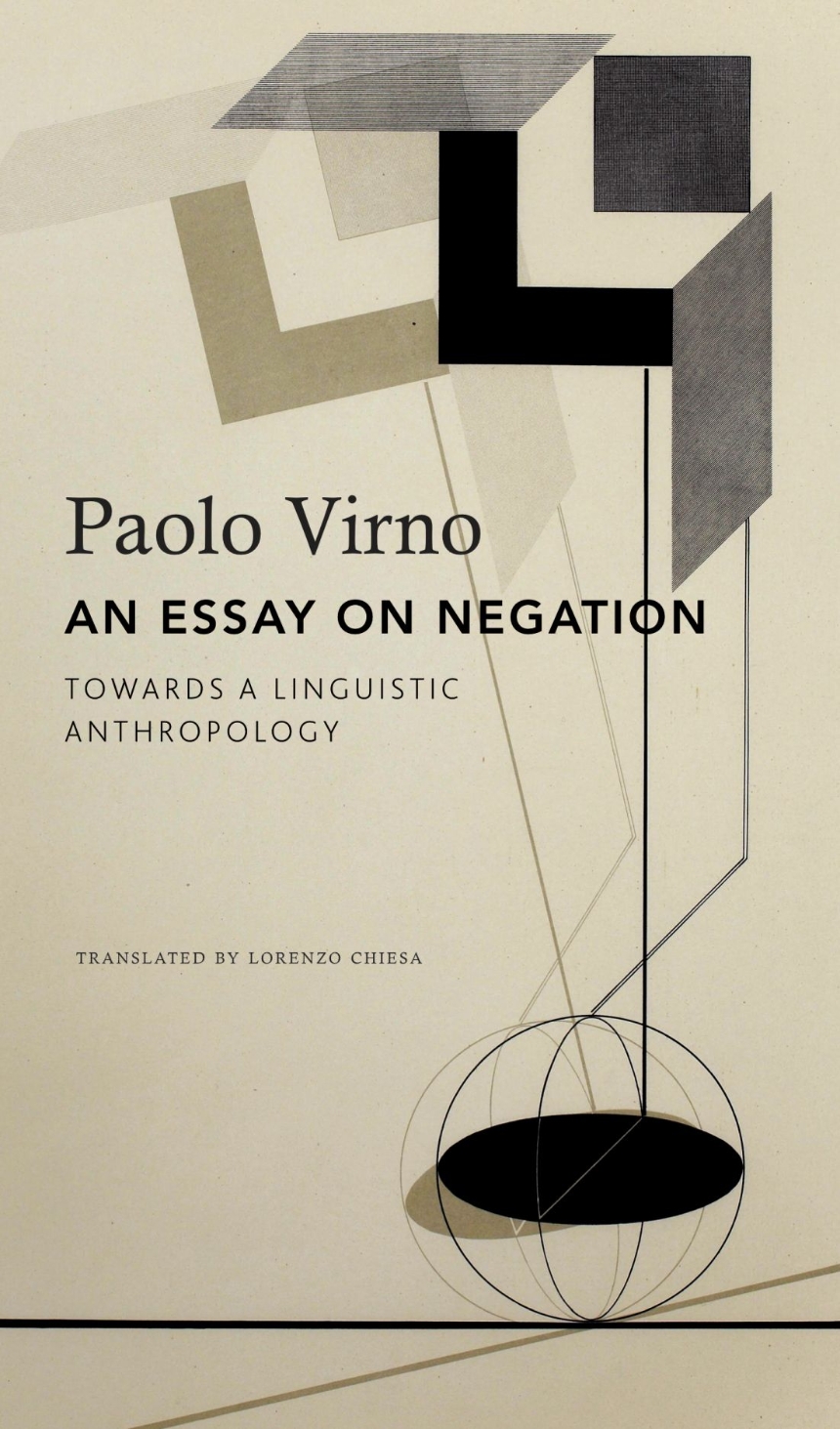A vital addition to Seagull’s growing Italian List that focuses on leftist Italian thought, bringing famous as well as little-known yet crucial voices into the English language.
As speaking animals, we continuously make use of an unassuming grammatical particle, without suspecting that what is at work in its inconspicuousness is a powerful apparatus, which orchestrates language, signification, and the world at large. What particle might this be? The word not.
In Essay on Negation, Paolo Virno argues that the importance of the not is perhaps comparable only to that of money—that is, the universality of exchange. Negation is what separates verbal thought from silent cognitive operations, such as feelings and mental images. Speaking about what is not happening here and now, or about properties that are not referable to a given object, the human animal deactivates its original neuronal empathy, which is prelinguistic; it distances itself from the prescriptions of its own instinctual endowment and accesses a higher sociality, negotiated and unstable, which establishes the public sphere. In fact, the speaking animal soon learns that the negative statement does not amount to the linguistic double of unpleasant realities or destructive emotions: while it rejects them, negation also names them and thus includes them in social life. Virno sees negation as a crucial effect of civilization, one that is, however, also always exposed to further regressions. Taking his cue from a humble word, the author is capable of unfolding the unexpected phenomenology of the negating consciousness.
As speaking animals, we continuously make use of an unassuming grammatical particle, without suspecting that what is at work in its inconspicuousness is a powerful apparatus, which orchestrates language, signification, and the world at large. What particle might this be? The word not.
In Essay on Negation, Paolo Virno argues that the importance of the not is perhaps comparable only to that of money—that is, the universality of exchange. Negation is what separates verbal thought from silent cognitive operations, such as feelings and mental images. Speaking about what is not happening here and now, or about properties that are not referable to a given object, the human animal deactivates its original neuronal empathy, which is prelinguistic; it distances itself from the prescriptions of its own instinctual endowment and accesses a higher sociality, negotiated and unstable, which establishes the public sphere. In fact, the speaking animal soon learns that the negative statement does not amount to the linguistic double of unpleasant realities or destructive emotions: while it rejects them, negation also names them and thus includes them in social life. Virno sees negation as a crucial effect of civilization, one that is, however, also always exposed to further regressions. Taking his cue from a humble word, the author is capable of unfolding the unexpected phenomenology of the negating consciousness.
Reviews
Table of Contents
1. Prologue
Mirror Neurons and the Faculty of Negation
1.1 Logic and Anthropology
1.2 In the Beginning Was the ‘We’: An Intersubjectivity without Subjects
1.3 This is Not a Man
1.4 The Public Sphere as Negation of a Negation
2. The Money of Language
2.1 Of a Peculiar Omission, and the Possibility of Remedying It
2.2 Ferdinand de Saussure’s ‘Intimate Though’
2.3 Negative Facts
2.4 The Deduction of the ‘Not’
2.5 A Janus-Faced Sign
2.6 Negation as Linguistic Currency
3. The Meaning of ‘Meaning’
3.1 Beyond Saussure
3.2 Negation and Mental Pictures
3.3 Fractures Internal to the Statement
3.4 The Neutrality of Sense
3.5 Of the Question Mark
3.6 The ‘Not’ and the Possible
3.7 The Misery of Psychologism
4. On Plato’s Sophist
4.1 The Discovery of Negation in Infancy
4.2 Drifting and Landing
4.3 Complementary Classes
4.4 Being What Is Different, Saying What Is Different
4.5 Metamorphosis of the Héteron
4.6 Non-Being According to Heidegger: The Centrality of Moods
5. Negation and Affects
5.1 Natural History
5.2 A Twofold Interface
5.3 A New Experience of Pain
5.4 Freud as a Theorist of Negation
5.5 Containing Destruction
5.6 Destroying Empathy
Appendices
A. Negative Actions
B. Double Negation: A Resource for Praxis
Mirror Neurons and the Faculty of Negation
1.1 Logic and Anthropology
1.2 In the Beginning Was the ‘We’: An Intersubjectivity without Subjects
1.3 This is Not a Man
1.4 The Public Sphere as Negation of a Negation
2. The Money of Language
2.1 Of a Peculiar Omission, and the Possibility of Remedying It
2.2 Ferdinand de Saussure’s ‘Intimate Though’
2.3 Negative Facts
2.4 The Deduction of the ‘Not’
2.5 A Janus-Faced Sign
2.6 Negation as Linguistic Currency
3. The Meaning of ‘Meaning’
3.1 Beyond Saussure
3.2 Negation and Mental Pictures
3.3 Fractures Internal to the Statement
3.4 The Neutrality of Sense
3.5 Of the Question Mark
3.6 The ‘Not’ and the Possible
3.7 The Misery of Psychologism
4. On Plato’s Sophist
4.1 The Discovery of Negation in Infancy
4.2 Drifting and Landing
4.3 Complementary Classes
4.4 Being What Is Different, Saying What Is Different
4.5 Metamorphosis of the Héteron
4.6 Non-Being According to Heidegger: The Centrality of Moods
5. Negation and Affects
5.1 Natural History
5.2 A Twofold Interface
5.3 A New Experience of Pain
5.4 Freud as a Theorist of Negation
5.5 Containing Destruction
5.6 Destroying Empathy
Appendices
A. Negative Actions
B. Double Negation: A Resource for Praxis

